…More Tom and Jerry stuff… It’s Greaaaaaat:
Tom and Jerry – Blue Cat Blues ~ Toms love life is getting him down 😀
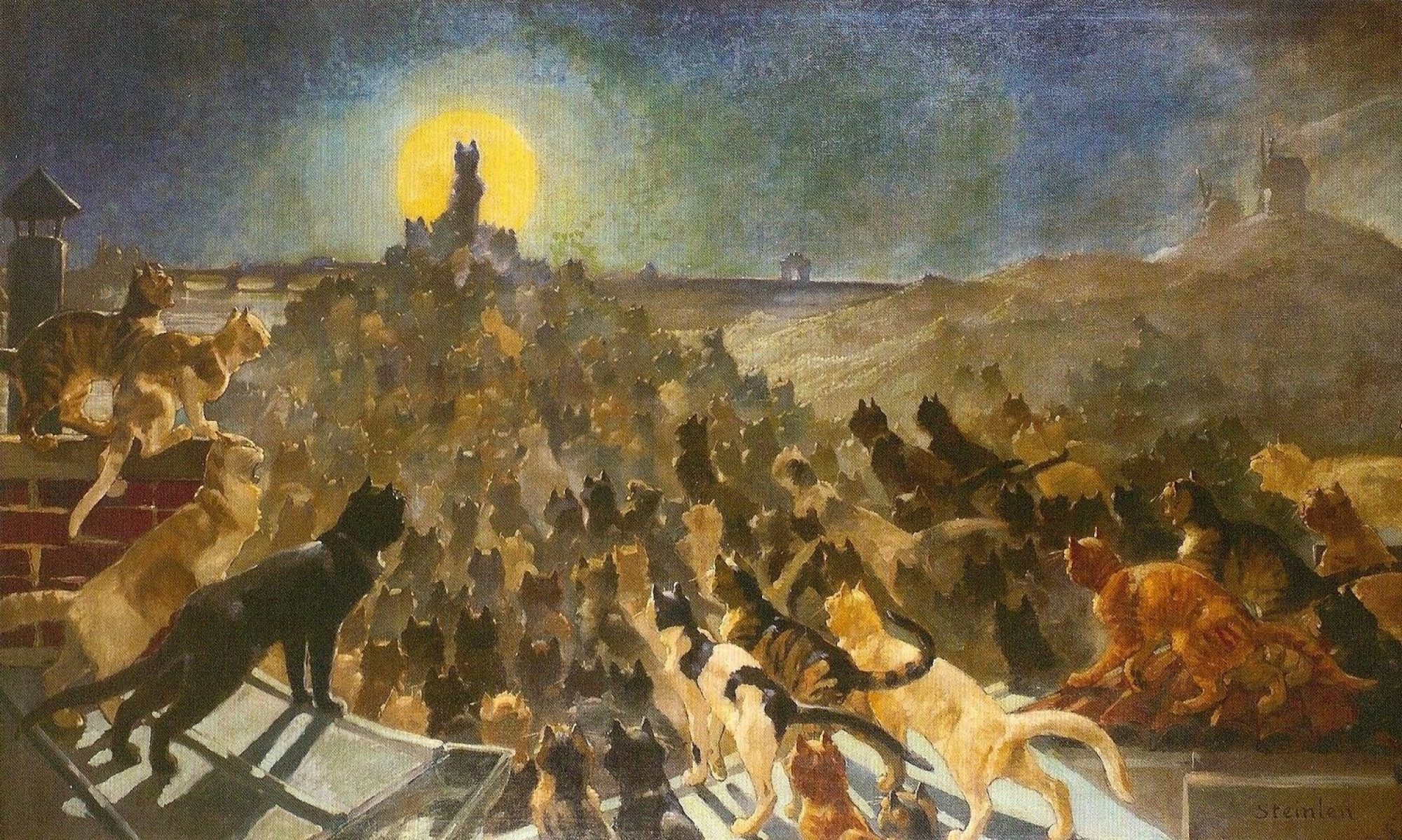

Feline Blogs & Information
…More Tom and Jerry stuff… It’s Greaaaaaat:
Tom and Jerry – Blue Cat Blues ~ Toms love life is getting him down 😀
Hi reader, Norman reporting..
Well I really went and did it this time. Had my morning bowl and went out for a stretch. Just patrolling my boundary on Friday morning with a bit of scent marking here and there and along comes this fur ball monster of a puss. Noses out from under the fence he does. I was duty bound to protect my territory and wasn’t going to let him step on my ground for a minute. Sadly I knew I was doomed from the start.
In seconds Claw and Fur were flying and I didn’t feel it at first. I saw him off alright but suspect he just went home for his breakfast as I was an easy target for the brute. I’m a bit nervous now of that patch of dirt by the fence in case his face appears there again. And for my bravery I have a half inch slash across my forehead which is claw deep…and what’s worse a further result was….well see for yourself.
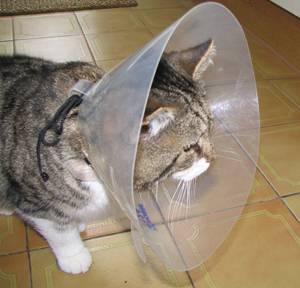
My owner took this photo to prove the battle was indeed real. And the Ruff..well you see I just cant keep from licking my wound so I’m now trussed up like Mary Queen of Cats.
Hope you like my tale, so..until the next time…
Ciao,
Norm.
Cat of the month ~ August 2007
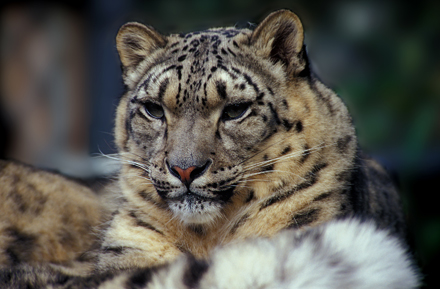
The Snow Leopard Trust.
Founded in 1981, the Snow Leopard Trust is the largest and oldest organization working solely to protect the endangered snow leopard and its Central Asian habitat.
Conservation Philosophy
How do you save a snow leopard? Or a tiger, rhino, rare butterfly, or for that matter a patch of rainforest? These are the questions that every conservation organization faces, and that challenges all of us. Conservation actions can take many forms; setting aside lands, answering critical research questions, working to change government policies, partnering with communities, enforcing anti-poaching laws, or some mix of these and other efforts.
The Snow Leopard Trust use a combination of approaches that focus on partnering with communities in snow leopard habitat. They build community partnerships in addition to using science and research to determine key snow leopard habitat, assess wildlife-human conflict levels, and identify potential resources for conservation programs.
High priority areas are then chosen including key snow leopard habitat, with a history of conflict between predators and the communities, and potential resources to sustain a community-based conservation program.
When the science and research identifies an area as a priority site time is spent with local residents, listening to their hopes and concerns, and only then is a conservation program jointly developed.
Conservation efforts must meet four important goals.
1. The protection of snow leopards and their habitat, involving local communities in this effort.
2. An improved quality of life for the members of the community.
3. The program developed must have a path to becoming self-sufficient � where after a time it is no longer dependent on donor dollars.
4. The results of the program must be verifiable through monitoring programs.
The Snow Leopard Trust strives to follow these principles in all its community-based conservation efforts.
Visit the website via the link above and read about the different projects that are being implemented.
The Snow Leopard Trust constantly endeavor to improve our conservation projects to better meet the needs of cats and humans, and they are seeing wonderful results at their project sites. Here the livelihoods of families and communities have been improved greatly whilst snow leopards are being protected and their populations growing.
[Extract and Photograph from the Snow Leopard Trust Website]
Cat Cartoons! Here’s a selection of Cat cartoons and animations, a few of which I’ve tuned into over the years. Anyone got any others to add?… there must be thousands!, Ed.
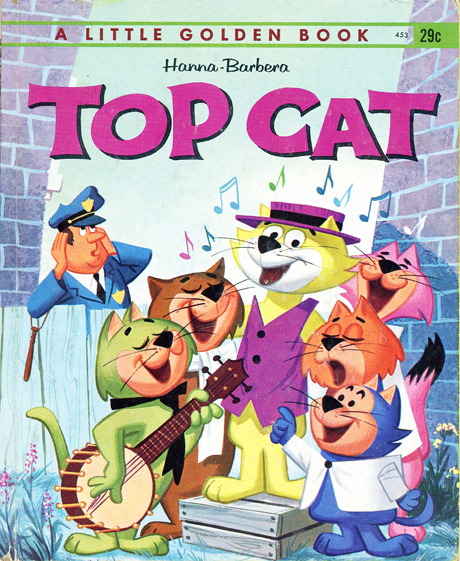
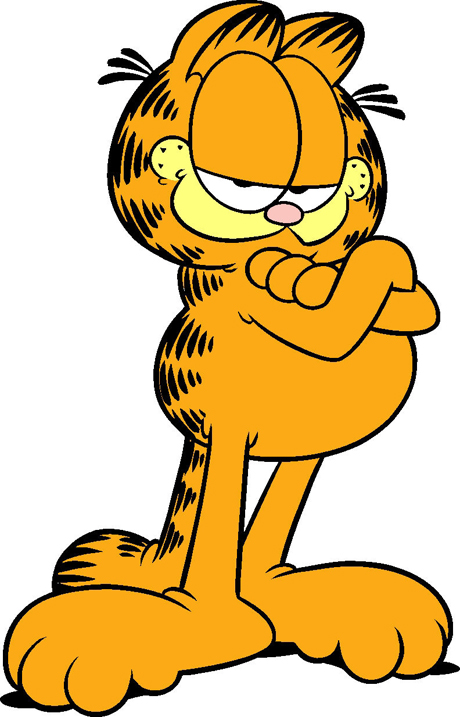
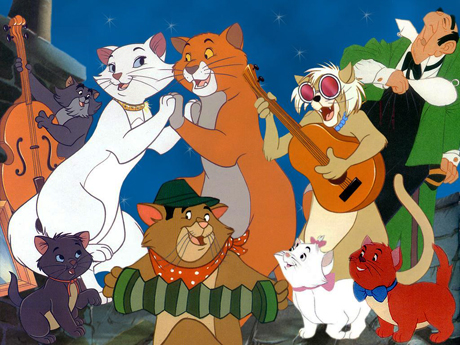
A list of just a few more cat cartoons. The original list was compiled by the
pictures-of-cats.org website. I’m updating it to include new cartoons (I’m finding on the www) and some details of the cartoon release dates and authors/creators too (get a life comes to mind!). Lets see if we can get just a few more cartoon images posted soon.
Cat [Appeared In] [Series/Comic/Film] [First Shown] [Created By]
□ Alley-Kat-Abra [ Zoo Crew ] [DC Comics] [February 1982] [Roy Thomas-Scott Shaw]
□ The Robber Kitten [ Silly Symphonies ] [from 1929] [Walt Disney]
□ Attila [ Mother Goose and Grimm ] [2004] [2004] [Mike Peters]
□ Aunt Evelyn [ Garfield ] [comic/film/TV] [June 19, 1978] [ Jim Davis]
□ Aunt Reba [ Garfield ] [comic/film/TV] [June 19, 1978] [ Jim Davis]
□ Autocat [ Motormouse and Autocat ][TV][1969][Hanna-Barbera-Bourne]
□ Azrael [Smurfs] [TV] [1958] [Johan & Peewit]
□ Babbit and Catstello [A Tale of Two Kitties ] [1942] [Bob Clampett]
□ Bad Cat [ Augie Doggie ] [Animation] [1959] [Michael Maltese]
□ Baggypants [Baggy Pants and the Nitwits] [US TV] [1977] [NBC]
□ Bat Cats [ Mighty Mouse ] [Animation] [1942] [Izzy Klein]
□ Bella [ Otto ]
□ Benny the Ball [ Top Cat ]
□ Bette Noir [ Poosy Gato ]
□ Beverly [ Fumbles ]
□ Big Bertha [ Fritz the Cat ]
□ Bill the Cat
□ Black Cat [ Courageous Cat ]
□ Blue the Cat [ Orson the Piglet ]
□ Boo
□ Boom Boom Pussini [ Heathcliff ]
□ Boopsie Meow [ Kamikaze cat ]
□ Captain Amerikat [ Spider-Ham ]
□ Captain Jack
□ Casual T. Cat
□ Catfather, The [ Heathcliff ]
□ Cat Gut [ Pound Puppies ]
□ Cattanooga Cats
□ Cattenstein [ Mighty Mouse ]
□ Catula [ Count Duckula ]
□ Charlemange [ Pound Puppies ]
□ Chester Cheetah
□ Chops the Cat [ Augie Doggie ]
□ Chuck [ Omaha the Cat Dancer ]
□ Cinderkitty [ Count Duckula ]
□ Claude Cat
□ Comet Cat [ Spirit ]
□ Cool Cat
□ Corporal Bruiser [ Heathcliff ]
□ Count Gatto [ Atomic Mouse ]
□ Creepy Cat
□ Cuffy Cat [ Supermouse ]
□ Delbert [ Smilin’ Ed Smiley ]
□ Della Pussywillow [ Fritz the Cat ]
□ Delroy [ Maxwell ]
□ Desdemona
□ Doc [ Mr Jinks ]
□ Douglas [ Supermouse ]
□ Dark Batfang [ Hot Dog ]
□ Erma Felna
□ Fancy Fancy [ Top Cat ]
□ Fat Cat [ Rescue Rangers ]
□ Fat Freddie’s Cat
□ Fatkat
□ Feline Faust [ Zoo Crew ]
□ Felis [ Defiants ]
□ Fencer [ Foofur ]
□ Figaro
□ Firkin [ Maxwell ]
□ Flop
□ Fluffy [ Garfield ] [comic/film/TV] [June 19, 1978] [ Jim Davis]
□ Fraidy Cat
□ Frankenstein’s Cat [ Mighty Mouse ]
□ Furrball [ Hamton ]
□ Gabrielle [ Fritz the Cat ]
□ Gertie [ Atomic Mouse ]
□ Gideon [ J. Worthington Foulfellow ]
□ Goldie [ Top Cat ]
□ Guido [ Garfield ] [comic/film/TV] [June 19, 1978] [ Jim Davis ]
□ Hairball [ Pound Puppies ]
□ Heathcliff [ Heathcliff ] [comic] [1973] [ George Gately ]
□ Henry [ Heathcliff ] [comic] [1973] [ George Gately ]
□ Henry’s Cat [ Henry’s Cat ] [UK TV] [1983] [ Bob Godfrey ]
□ Horse [ Dog[2] ]
□ Inky and Dinky [ Felix the Cat ]
□ Jane Feline
□ Jaune-Tom [ Mewsette ]
□ Jenny [ Bucky O’Hare ]
□ Joey [ Omaha the Cat Dancer ]
□ Julius the Cat
□ Kamikaze Cat
□ Kat Karson
□ Katnip [ Herman the Mouse ]
□ Kirby Cat [ Mr. Wild Wolf ]
□ Kitty
□ Kitty [ Dagmar ]
□ Kitty [ Doctor Whoot ]
□ Kittycat [ Barfy ]
□ Kitty Cuddles [ Buzzy the Crow ]
□ Kitz ‘n’ Katz
□ Klondike Kat
□ Korky the Cat [ Homeless Hector ]
□ Kosmo W. Kat
□ Kosy [ Kitz ‘n’ Katz ]
□ Krazy Kat
□ Kyle [ Tom and Jerry ]
□ Lionheart
□ Lola [ Bucky O’Hare ]
□ Lucifer
□ Madame Rubens-Chatte [ Mewsette ]
□ Manx [ Fred ]
□ Maxwell
□ Mehitabel [ Mewsette ]
□ Meowrice [ Mewsette ]
□ Mewsette
□ Milton
□ Miss Kitty [ Porky Pig ]
□ Miss Lil
□ Mr Jack
□ Mr Jinks
□ Mrs Kat [ Krazy Cat ]
□ Mostly [ Bitsy ]
□ Motley the Cat
□ Ms Arda Chevious [ Bucky O’Hare ]
□ Muffie [ Miss Lil ]
□ Naif the Waif [ Urban Gorilla ]
□ Nermal [ Garfield ] [comic/film/TV] [June 19, 1978] [ Jim Davis]
□ Oil Can Harry [ Mighty Mouse ]
□ Oliver the Cat
□ Oliver Wendell McDuffy [ Bulldog Drumhead ]
□ Ollie the Merry Mouser [ Toby the Badger ]
□ Omaha the Cat Dancer
□ O’Malley the Alley Cat [ Aristocats ]
□ Percy [ Little Roquefort ] [TV Cartoon] [1950] [TerryToon 20thCF]
□ Pete [Pete the Cat] [Childrens cartoon story] [Various sources]
□ Pierre [ Top Cat ]
□ Punkin Puss [ Punkin’ Puss & Mushmouse ] [Animation/TV] [1963] [Hanna-Barbera]
□ Pussyfoot [Pussyfoot] [Animation] [1952] [Chuck Jones]
□ Pussy Willow [ Kosmo W. Cat ]
□ Puttypuss [ Houndcats ]
□ Robespierre [ Mewsette ]
□ Radio Catts [ Kid’s Cat ]
□ Reddy [ Ruff and Reddy ]
□ Sad Cat [ Possible Possum ]
□ Salem
□ Scat Cat [ Aristocats ]
□ Scratch [ Biskitts ]
□ Sebastian [ 1 ]
□ Seymour [ Rude Dog ]
□ Shadow [ Atomic Mouse ]
□ Shelley [ Omaha the Cat Dancer ]
□ Siamese Twins, The [ Heathcliff ]
□ Si and Am [ Lady and the Tramp ]
□ Silver Dollar Dan [ Kat Karson ]
□ Snowball [ Tom and Jerry ]
□ Soapy [ Neil the Horse ]
□ Sonja [ Heathcliff ]
□ Sourpuss [ Gandy Goose ]
□ Spook [ Top Cat ]
□ Spooky
□ Spot [ Hong Kong Phooey ]
□ Steaky the Super-Cat
□ “Stupid Cat” [ Snoopy ]
□ Stutz [ Houndcats ]
□ Super Snooper
□ Terrible Tom [ Supermouse ]
□ Three Little Kittens [ Three Bears ]
□ Tibs [ Pongo and Perdita ]
□ Tiger [ Feivel Mousekowitz ]
□ Tuffy the Cat [ Mervin ]
□ Tuffy the Cat [ Supermouse ]
□ Uncle Barney, aka Aunt Bernice [ Garfield ] [June 19, 1978] [ Jim Davis]
□ Uncle Arno [ Garfield ] [comic/film/TV] [June 19, 1978] [ Jim Davis]
□ Uncle Berle [ Garfield ] [comic/film/TV] [June 19, 1978] [ Jim Davis]
□ Uncle Bernie [ Garfield ] [comic/film/TV] [June 19, 1978] [ Jim Davis]
□ Uncle Bob [ Garfield ] [comic/film/TV] [June 19, 1978] [ Jim Davis]
□ Great Uncle Buchanan [ Garfield ] [comic/film/TV] [June 19, 1978] [ Jim Davis]
□ Uncle Rodger [ Garfield ] [comic/film/TV] [June 19, 1978] [ Jim Davis]
□ Uncle Ed [ Garfield ] [comic/film/TV] [June 19, 1978] [ Jim Davis]
□ Victoria [ Jane Feline ]
□ Vocal [ Cyborg Gerbils ]
□ Waldo Kitty
□ Waldo the Cat [ Fritz the Cat ]
□ Whizzy [ Streaky the Super-Cat ]
□ Winston [ Fritz the Cat ]
□ Wizard of Paws [ Count Duckula ]
□ Zipper [ Care Bears ]
…. And for good measure a list of fictional cat references from many sources and genres (provided once again by Wikipedia.org)
The first Snowshoes appeared in the 1960s in the United States as a result of cross-breeding between a Siamese and a bi-colored American Shorthair producing a sturdy, pointed cat with white markings on the face, chest and feet. The Snowshoe is a relatively small cat with a lean and muscular stature. Th ACFA standard for this cat breed states that it gives the appearance of great power and agility, yet has the look of a runner rather than a weight lifter.
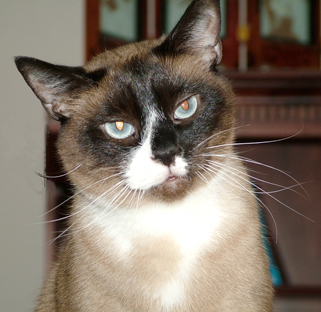
The ears are large and triangular. The head will also be triangular and usually has black markings. In purebreds, the eyes are always blue. Coat is short-haired, and is white and gray. The tail is medium-sized. Snowshoe cats come in blue, lilac, lynx, fawn, chocolate, and seal points.
Snowshoe are generally sweet tempered, energetic, playful, intelligent, and adaptable. They are a very social breed that requires more attention than most cats do, and consequently cannot be left alone for long periods of time. In a typical household they will be friendly to everyone, but will usually devote themselves almost entirely to one person.
Snowshoe kittens are all born white. Their colors and markings become visible within 1-3 weeks after being born. The pattern on each of these cats are different for each Snowshoe. No two Snowshoes are alike.
The Snowshoe is considered to be a rare breed
The Balinese is a breed of oriental cat with long hair and Siamese-style markings, or points. They resemble a Siamese with a medium-length silky coat and a plumed tail, but not nearly as fluffy as a Himalayan, and they require much less grooming. Balinese are extremely intelligent cats, although less talkative than their Siamese ancestors.
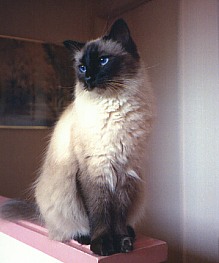
The Balinese was originally registered as a ‘longhaired Siamese’, and examples were known from the early 1920s. The occasional long-haired kittens in a Siamese litter were seen as an oddity, and sold as household pets rather than as show cats. This changed in the mid-1950s, when two breeders, Mrs. Marion Dorsey of Rai-Mar Cattery in California and Mrs. Helen Smith of MerryMews Cattery in New York, decided that they would commence a breeding program for the longhaired cats. Helen Smith named the cats ‘Balinese’ because she felt they showed the grace and beauty of Balinese dancers, and because ‘longhaired Siamese’ seemed a rather clunky name for such graceful felines. The breed became quite popular after this, and a number of breeders began working on ‘perfecting’ the Balinese appearance. This led eventually to the development of two entirely separate ‘strands’ of Balinese cat – some owners prefer a traditional or ‘apple-headed’ Balinese, while breeders and judges tend to prefer a more contemporary appearance.
Like the Siamese, there are now two different varieties of Balinese being bred and shown – ‘traditional’ Balinese and ‘contemporary’ Balinese. The traditional Balinese cat has a coat approximately two inches long over its entire body and it is a sturdy and robust cat with a semi-rounded muzzle and ears. The traditional Balinese closely resembles a Ragdoll cat although they do not share any of the same genes or breeding other than having a partially Siamese ancestry. A ‘contemporary’ Balinese has a much shorter coat and is virtually identical to a standard show Siamese except for its tail, which is a graceful silky plume.
In most associations, the Balinese is accepted in a full range of colors, including the four traditional Siamese point colors of seal, blue, chocolate, and lilac, as well as less traditional colors such as red and cream, and patterns such as lynx (tabby) point and tortie point. However, in CFA, the Balinese is only accepted in the four traditional Siamese colors; all other colors and patterns are considered Javanese (cat).
The Korat is one of the oldest stable breeds of cat. Originating in Thailand, it is named after the Nakhon Ratchasima province, although in Thailand it is often known as Si-Sawat, which means good fortune. In fact they are often known colloquially as the “Good Luck Cat” and are given in pairs to newlyweds or people of high esteem as a wish for good luck.
Korats are a rare feline, even in their native Thailand, and remain the most highly prized cat of the Thai people; who think of the Korat as their national cat, (not the Siamese, as you might think).
The first known written mention of the Korat was in “The Cat-Book Poems” authored between 1350 and 1767 AD in Thailand, now preserved in the National library in Bangkok. They first appeared in America in the 1950s and arrived in Britain from there in 1972.
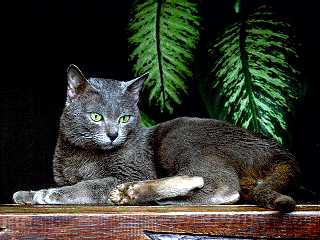
Korat cats are a shorthair breed with a small to medium build and a low percentage of body fat. The Korat is a slow maturing, medium sized cat with a smooth curved body and a heart-shaped face. The eyes are large and are luminous green in colour. The body is semi-cobby muscular and firm, with a blue coat well tipped with silver. The Korat can be a very vocal cat, but this does not usually indicate aggression. They are surprisingly heavy for their size and are highly active. They can form strong bonds with people.
Korats have many characteristics that together distinguish them as a breed. Here are just a few of Korat characteristics which are sought at Cat Shows.
As a final Note, Jean Johnson first introduced Korats to the US in 1959. She had lived in Thailand, where she first encountered the breed. Her first pair were named Nara (male) and Dara (female).
Breed Website:https://www.korats.org.uk